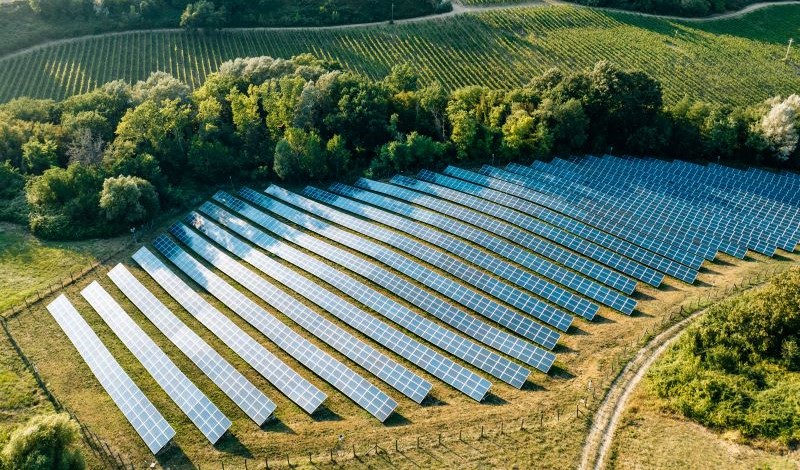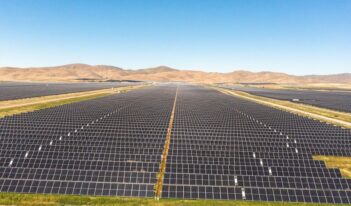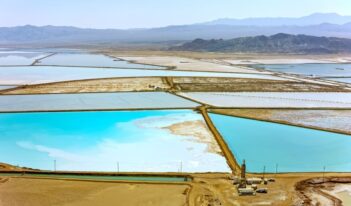
Scholars study how to redevelop toxic waste sites.
The Government Accountability Office estimates that there are approximately 425,000 abandoned and contaminated industrial sites covering 5 million acres of the United States. These sites—called brownfields—create health risks and issues in urban planning. Scholars are thus researching the best ways to encourage the redevelopment of brownfields to address these concerns.
One possible solution is the brownfield-to-brightfield approach, which seeks to turn brownfields into renewable energy plants, or “brightfields,” propose Sesil Koutra and several coauthors of Belgium’s University of Mons and Université Libre de Bruxelles in a recent article.
The Koutra team explains that the rise of environmental consciousness in the 1960s led many citizens to be overly cautious of abandoned industrial sites that may be polluted. This societal wariness of abandoned industrial sites discouraged development on the abandoned sites and contributed to urban sprawl, note Koutra and her coauthors. The Koutra team explains that these overlapping concerns around environmentalism and urban sprawl led to the coining of the term brownfields, and the desire to remediate these polluted sites.
Since the 1960s, countries have designed programs to remediate brownfields in a variety of ways, note Koutra and her coauthors. The most common measures adopted in Europe and the United States allow the government to clean up these sites and recover associated costs from responsible parties, explain the Koutra team.
Koutra and her coauthors contend that if the negative stigma of brownfields is shifted, then the sites could be great investments. The best way to achieve this change in perspective is for governments to adopt a brownfield-to-brightfield approach seeking to turn contaminated sites into solar or wind farms, argues the Koutra team.
The three primary benefits Koutra and her coauthors promote are remediation of environmental and urban concerns to promote public health, the revitalization of affected communities through increased investment, and the associated economic rehabilitation and job creation. They further contend that brightfields are the best way to solve the inherent contradiction of urban land idleness and urban sprawl while also ensuring the sustainable development of cities.
Koutra and her coauthors acknowledge that there are reasons to doubt that brightfields offer the best solution to land pollution. They suggest that current research on brightfields assumes that remediation efforts and construction can be done cost effectively, that most brownfields are situated in locations with enough solar energy potential to be efficient, and that solar power is perceived positively by brownfield communities.
But the Koutra team argues that the costs of remediation and construction would be offset by the jobs created during the projects, the money saved from long-term energy production, and the increased property values and associated investments in the surrounding areas.
Koutra and her coauthors also explain that because brownfield sites are often located close to transportation nodes and city centers, the energy from brightfields could easily and efficiently be connected to city electric grids. They add that the cost-benefit analysis is only getting more efficient for brightfields as renewable energy production and storage technology continues to mature.
Koutra and her coauthors explain that, as technology develops, renewable energy will be viable in larger geographic regions, and studies on a few completed brightfield projects prove that they are effective solutions for health and energy concerns.
The Koutra team argues that the best ways to create community buy-in are to create programs that incorporate community involvement in the projects and to promote training and awareness on the benefits of renewable energy.
The most effective models for brightfields will consider these lessons from current successful brightfield projects and incorporate them into strategies that balance economic efficiency with social equity, contends the Koutra team. They argue that the best way to ensure adoption of these ideas is to frame urban redevelopment and revitalization as community-based visions to overcome the negative perception of brownfields.
The Koutra team acknowledges that although the current research on brightfields boasts a positive consensus, challenges remain and much more research needs to be done before brightfields can serve as the primary brownfield redevelopment strategy.
Koutra and her coauthors break down their recommendations into four steps. First, they suggest studies on how brownfields can be directly considered in future renewable energy regulations. Second, they encourage more research on the best strategies to redevelop sites into brightfields. Third, they recommend inquiries into how all of this information can be operationalized in the most efficient way. Finally, although evidence suggests brightfields are economically positive in the long-run, the Koutra team proposes the creation of national investment funds for brightfields to help cover the early costs of remediation and ensure that the necessary investments occur.



